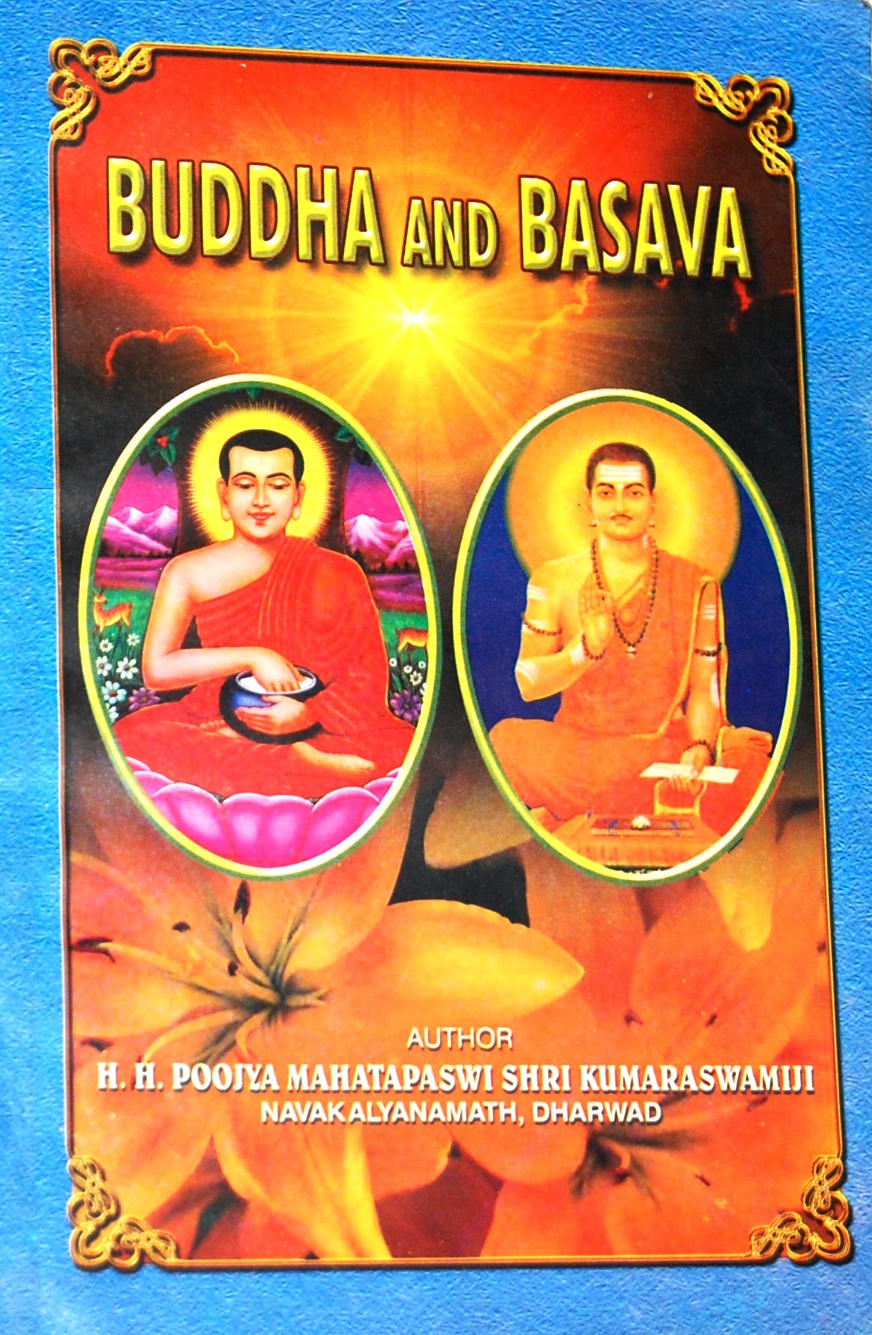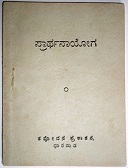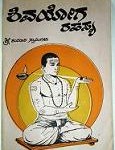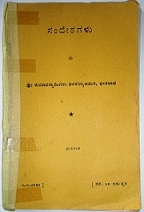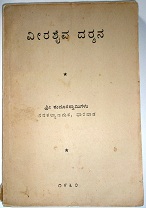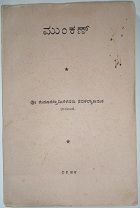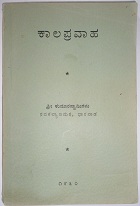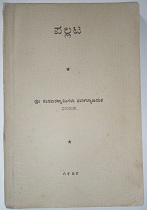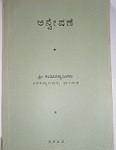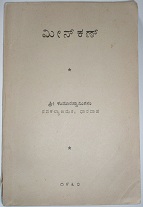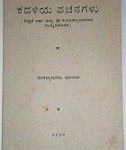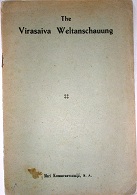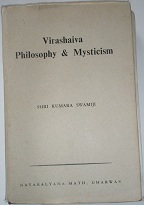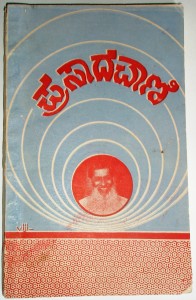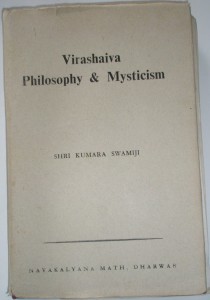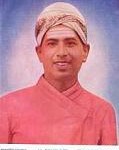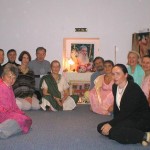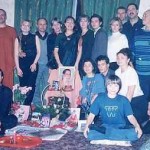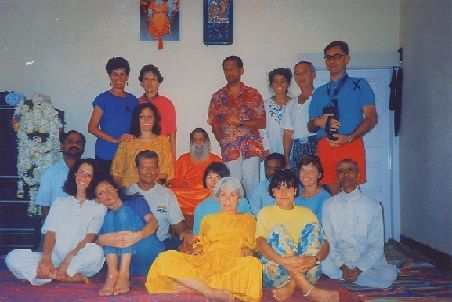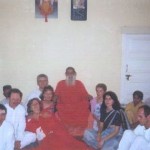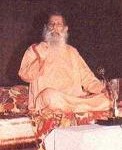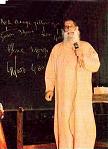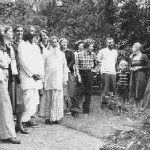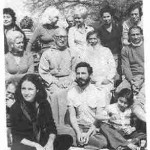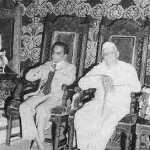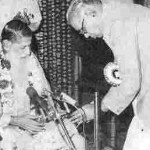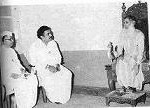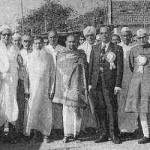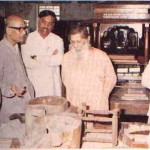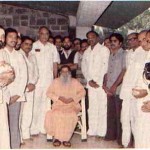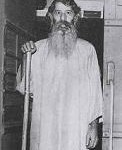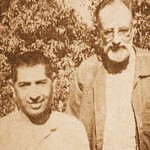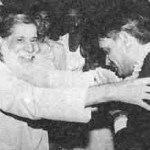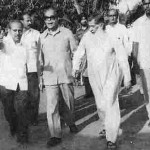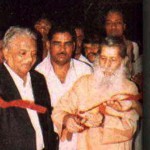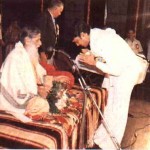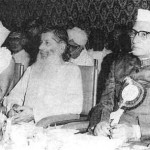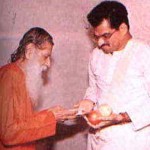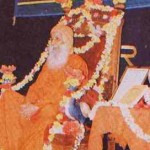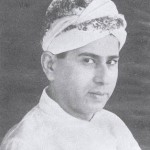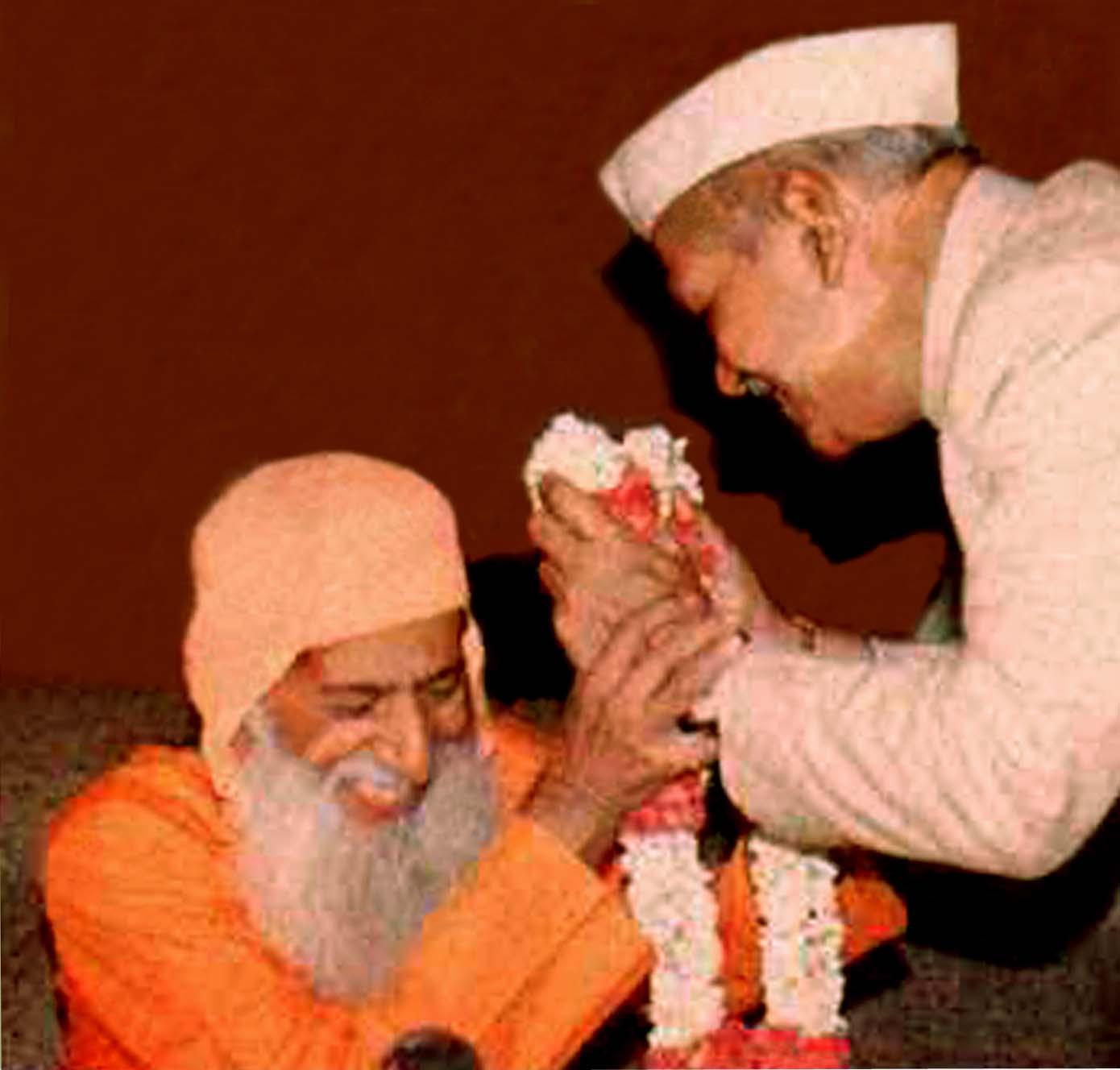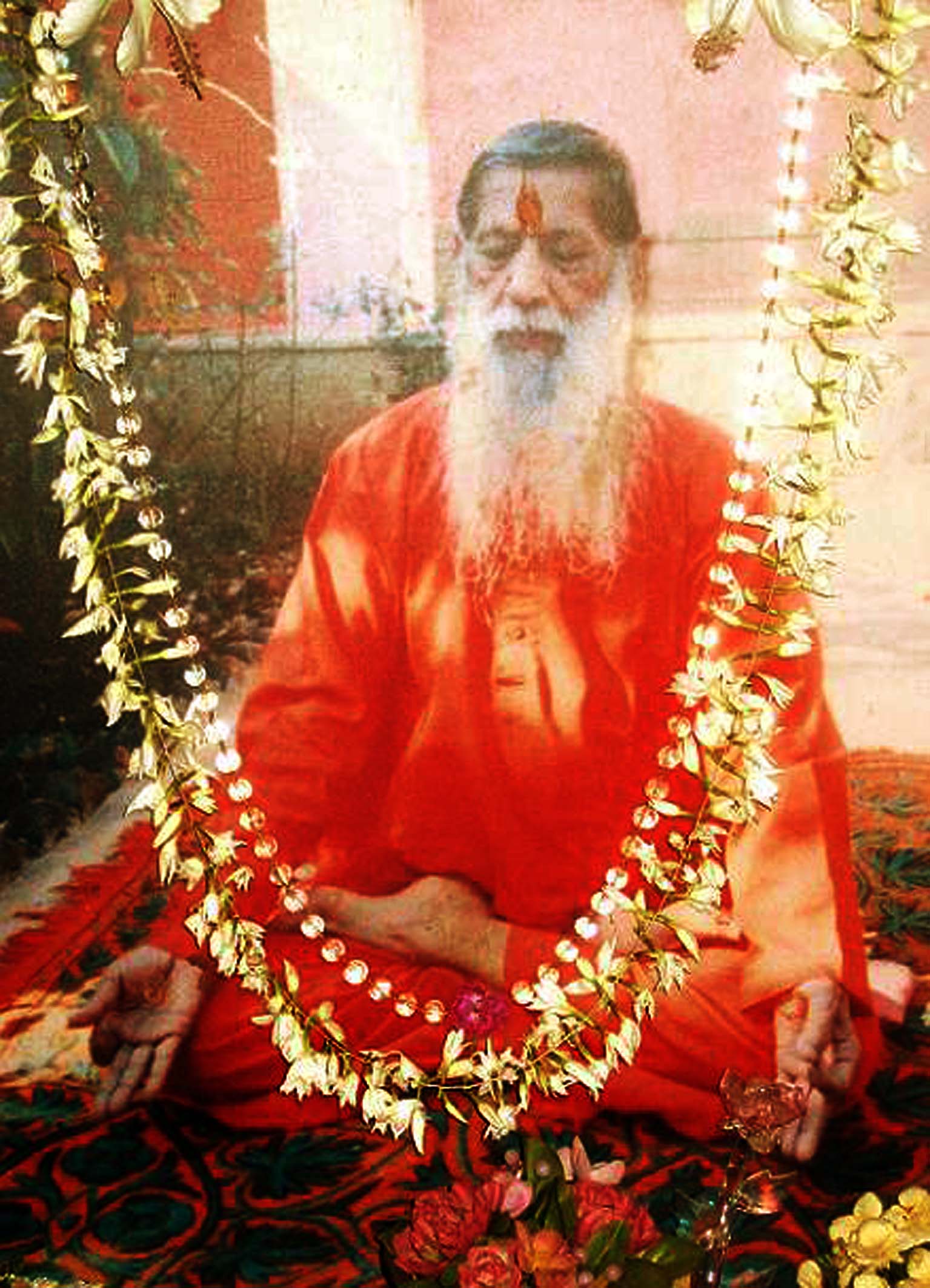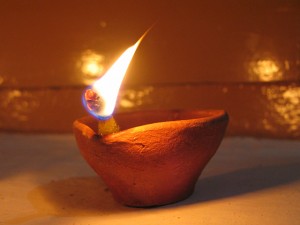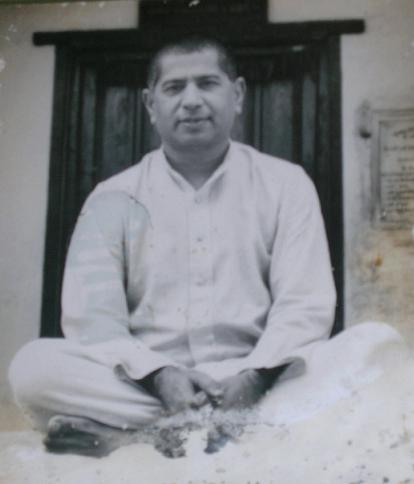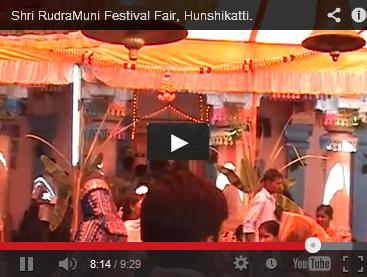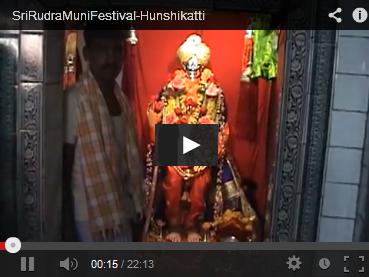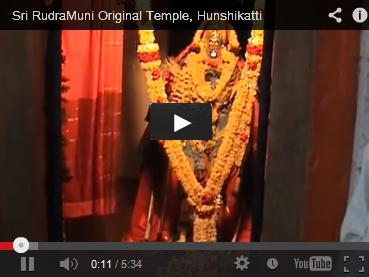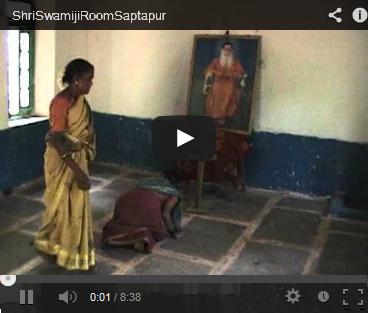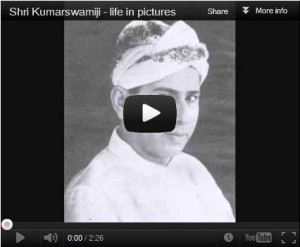The Svarupa of Parabrahman, according to the Vedanta, is Sacchidananda; and this nature of Para-shiva is well expressed in terms of His self-consciousness as Asmi, Prakashe, Nandami, that is to say, Parashiva is conscious of His infinite presence, consciousness and bliss. Hence He is free and unlimited, and Shakti forms part and parcel of His Self. Vimarsha-shakti is the power of self-consciousness of the Lord. It is the conscious nature of Shiva with all the contents still unalienated and unmanifested. The Divine is self-luminous, so is a jewel; but the jewel is not conscious of its capacity, while the Divine is both self-luminous and conscious of His self-luminosity. It is this self-consciousness of the Lord that goes by the name of Vimarsha, Atma-vimarsha or Para-marsha, whose characteristic is that in it consciousness and energy, knowledge and force, are one.
A strictly historical survey of religion forces upon us the conclusion that the spirit of philosophical inquiry is one of skepticism and not of faith. In broad sense it might be possible to include the childish fancies of primitive nations as well as the systematisation of religious beliefs by priestly authority. In ancient times philosophy continued to be an integral part of theology, there was no philosophy outside of theology, there was no reasoned out dissertation beyond the limits represented by the religious interpretation of phenomena of the universe. India and Greece are two notable examples in the ancient world of the rise of philosophical thought, either in direct opposition to prevailing beliefs or independent of such beliefs. It does not however follow that because philosophy takes its rise from a spirit of indepedent inquiry, it also assumes an anti-religious character. Greek philosophy manifests this character because of the lack of proper spiritual guides, who as the leaders of the people, might have effected a re-adjustment of popular beliefs to scientific theories. On the other hand, the Greek philosophers, with some notable exceptions, such as Socrates and Plato were not distinguished by the possession of strong religious instincts. Religion in Greece was perhaps too much a matter of the State, and too strongly affiliated with family traditions to be influenced by philosophical speculation. In India, on the other hand, we see philosophy, though starting out like-wise in a skeptical spirit, assuming a religious aspect and indeed leading eventually to the founding of new religions India thus furnishes an example of the relationship existing between religion and philosophy, which is instructive in determining how far philosophy enters as a factor in the study of religion.
It has been observed that the main difference between an educated man and an ignorant person is the extent to which the instincts are controlled by the intellect. The child and the primitive man almost stand in this respect on the same level. Both are largely at the mercy of the impressions they receive. It follows that in the earliest forms of religion the emotional phases are predominant. Fear and hope are easily excited. The most significant result of the gradual mastery of the intellect over the emotions is the crystallization of confused impressions into religious doctrines. As the perception of the Infinite from being faint and indefinite becomes more sharply outlined, the doctrine of the super-natural powers takes shape. The idea of the Divine that first wells out of consciousness is taken up the intellect and becomes a theory of God’s government of the universe. The belief in the immortality of soul similarly starts up in man as an intuition, and only afterwards it is unfolded as a genuine doctrine. The suggestion that certain persons are divinely inspired and that to their utterances great value is to be attached, does not arise from a process of reasoning but it springs from the awe which later on takes the form of the doctrine of a Avatara-hood. And when we come to the doctrine of Trinity, it is even more evident that the doctrine is later than the belief, and represents the crystallization of emotions and impressions which were at first vague and undefined. We may incidentally remark that the mystic Trinity found in Virashaivism is Shiva, Shakti and Sharana which seems to have a remote ancestry to the nascent Trinity of An, Amma and Anil, which we come across in the recent findings of Mohenjo Daro and Harappa.
The achievements of man, despite his limitations, form not only a consolation but also an assurance that progress depends upon the sound and solid beliefs. It is these noble and edifying beliefs that constitute the real core of religion. The beliefs which have proved a help and a stimulus to mankind, which have enabled man to establish high standard of conduct, which have stirred him to deeds of valour and to acts of goodness � such beliefs may surely be accepted as a working hypothesis. Virashaivism believes in the reality of God, world and the individual soul, and thereby it accepts the reality of these three as a working hypothesis.
The individual soul is covered with Mala or impurity, but for which it would be all-knowing. One who is not so covered is not limited in knowledge, as for example, Shiva. It is this impurity of limitation that goes by the name of Anava-mala. Being thus covered or concealed, the individual soul begins to have experience of objects as distinct from the Self, and this perception of different objects constitutes Maya-mala. From this Maya-mala springs the whole material and mental world. The soul, being thus limited in knowledge and deluded in the perception of external objects, begins to act meritoriously or otherwise, and as a consequence undergoes transmigration. This is Karma-mala or impurity of action. And this action gives rise to Jati, nature of species, Ayus, length of life, and Bhoga, type of enjoyment. Tied by these three bonds, the individual soul is called Pashu. The Supreme Soul is called Pati. The word Pati means one who protects or controls Pashu by the fivefold activity of creation, preservation, destruction, dispensation and emancipation. But the human soul has to be re-born and re-shaped and re-tempered, until it has learnt to be attuned to the Infinite.
How can this be brought about? Virashaivism says : by Diksha. Diksha or initiation is very important ceremony in almost all the recognized religions of the world. It is a recurrent and dominant note in religion in one form or another. But the Virashaiva Diksha synchronizes with Linga-dharana, wearing of the Linga. It is a simple ritual with which are combined ethical preachings and the occultism of Yoga. The gist of the initiation is that the Guru transmits his spiritual power to his disciple, which pierces through the veil of nescience and liberates the soul from the three bonds. Thus the liberated soul, that is to say, the soul which is freed from Malatraya, the three kinds of impurity, by virtue of the triple Diksha1, (1.Kriya, Mantra, and Vedha are the three forms of Diksha. Kriya-diksha is attended with a proper ceremonial form when the Guru invests the novice with Linga. Mantra-diksha makes the filthy body of flesh a holy one by the Mantra being whispered in the ears of the novice by the Guru. Vedha-diksha infuses knowledge into the discipline by direct contact.) called Anga, the Godward soul, the soul that aspires to ascend towards God. But this ascent can only be achieved by undergoing a course of strict spiritual discipline and by living a life of devotion and spiritual discipline forms the practice of this religion as it does of other religions.
The practice of the Lingayata religion comprises within itself ;
1. Panchachara and
2. Ashtavarana
Panchachara are the five codes of conduct which lay down the rules of behaviour for the individual memebers of the Lingayata community as social beings. They are lingachara, sadachara, shivachara, bhrityachara and ganachara. Lingachara enjoins upon a Virashaiva that he should daily worship Linga, the representation of the Divine, and that he should be strictly monotheistic. Sadachara requires that a Lingayata should follow a profession and strictly lead a moral and virtuous life. He should earn money by honest work and utlize his savings and surplus for others in need. He should feed and clothe the Jangamas, the itinerant preachers of the Lingayat religion. By Shivachara the members are required to make no difference between one Lingayata and another, as they are all devotees of Shiva. Shivachara therefore demands that a Lingayata should dine and marry freely with other memebrs of the same community, even if they follow different vocations. Bhrityachara is the devotee’s attitude of complete humility towards Shiva and His devotees. It enjoins upon the devotee to behave humbly and modestly towards men and women, and kindly to all animals. Lastly, Ganachara represents the spirit of vindication. The Lingayata should not tolerate adverse remarks against the Godhead and ill-treatment of men and animals by others. As a member of the community, he has to strive for its upliftment and development.
Astavarana means the eightfold shields that protect the devotee from the onslaughts of nescience, and guide him safely to final beatitude. They shield him from the evils attaching to the worldly life by putting him in tune with the Infinite. They are Guru, Linga, Jangama (ascetic), Padodaka (water sanctified by the touch of the feet of the Guru or Jangama), Prasada (food so sanctified), Bhasma (sacred ashes), Rudraksa (rosary) and Mantra (mystic words).
The Guru is the spiritual and religious guide who initiates the novice into the Virashaiva faith with due forms. It is the Guru who, by initiation, ushers the devotee into the second or spiritual birth, as it were. It is he who gives the devotee real insight into the principles of the Lingayata religion, explains the inner meaning of the practices, and guides him on the path of righteousness. Since the Guru has gained the first-hand knowledge of God and the world by experience, the devotee finds great delight in serving and imitating him, and in acquiring knowledge from him. Hence the Guru has been given the first place among the Ashtavarana.
The Linga is the centre and basis of all religious practices and observances, because it is the Divinity concretely represented. The custom is that it is given by the Guru to the body at the very birth. It should always be borne on the body by a person from the time of his birth to that of his death. A Virashaiva must not miss his daily worship of the Linga, as it makes the wearer and worshipper conscious of his duty to the Godhead.
The Jangama is the third Avarana and is peculiar to this religion. Its etymological meaning is dynamic knowledge, having the same root gama as in Agama, Nigama etc., in the sense of knowledge. When it is applied to a person, it means one who has dynamic knowledge of God. He is called a Chara, because he travels from place to place, preaching religion and morality to all. He is therefore the itinerant Jivan-mukta, a man emancipated even while living, moving about in the country for the sake of guiding the devotees in their religious and spiritual exercises. A Virashaiva is enjoined not to make any distinction between the Guru, Linga and Jangama, as all of them are believed to be equal and to command the same reverence.
The Padodaka is literally the water from the feet of the Guru or Jangama. Hence it means holy water. Prasada means consecrated food. Padodaka and Prasada are water and food made holy and spiritually magnetized by the touch, sight or wish, Sankalpa, of the Guru or Jangama, which (food and water) in turn create Chidrasa, divine aura, in the devotee. Apart from this occult meaning, Padodaka and Prasada have a simple soical significance. In the presence of the Guru or Jangama, all devotees, irrespective of caste, colour, creed, age and sex, are considered equal; and all partake of the same food and water, thus suggesting a fraternal bond which is a very vital factor in communal solidarity.
The inner intuition which reveals the Self and burns up the illusion is called Bhasma. As an outer symbol of this, the Lingayata religion enjoins Bhasma-dharana, that is, besmearing the body with the holy ashes. The devotee has to change his angle of vision and try to perceive the Divine in all events and movements. This is the internal Rudraksha. As an outward symbol of this, he has to wear the Rudraksh-mala (a rosary of Rudraksh beads). Mantra really means meditation, whose vocal expression is embodied in the words �Namah Shivaya’, obeisance to Shiva.
These are the eight Avarana which distinguish Virashaivism from other sects. These eight shields keep a Lingayata pure in body and mind by protecting him from the onslaughts of Maya. Thus, a Lingayata is looked upon as ahiva-yogin or Shiva-sharana, who when he dies, is not burned but buried, on account of his body and mind having been already burnt by the fire of knowledge. Absence of cremation by fire in Virashaivism is note-worthy. The Virashaiva believes that the Linga is a great mass of light and fire which, when it is worn on the body, burns all the impurities of an individual by its constant contact. It is on the strength of this belief that the abolition of the Pancha-sutaka, that is five pollutions, and the burial of the dead are upheld in Virashaivism.
Sutaka comes from the word su (to be born). Suta is one that is born or begotten. Hence Sutaka comes to mean birth or production. As the process of birth is always attended with filth, Sutaka or birth is looked upon as impurity by Varnashrama-dharma. In course of time, the word lost its original meaning �birth’, and came to be looked upon merely as impurity or pollution. Sutaka is then any impurity or pollution. Varnashrama-dharma looks upon the act of dying as inauspicious as it visualizes the process of birth as impure. Thus death also is regarded as impurity or Sutaka. The idea of Sutaka does not restrict itself to the birth or death of an individual in a family. It is stretched still further so as to cover the whole genealogy of a tribe or Kula. So Jati-sutaka is impurity contracted through the death of a relative belonging to one’s own pedigree. Rajas-sutaka is menstrual pollution or impurity; Ucchista means the food left in the dish after eating. Hence Ucchista-sutaka means pollution contracted through the touching of food left after being eaten either by oneself or by others. Hence Jati-sutaka, Janana-sutaka, Maran-sutaka, Rajas-sutaka and Ucchista-sutaka may be rendered into English respectively pedigree pollution, birth pollution, death pollution, menstrual pollution, and leavings (touch of remnants of partaken food) pollution. Virashaivism does not deserve these five pollutions.
In Virashaivism, ‘Sthala’ has a philosophical connotation for the teachers of Virashaiva faith. Moggeya Mayideva in his Anubhava-Sutra addresses the Divine or the ultimate Reality as Sthala. The letter ‘stha’ denotes the source from which the phenomenal world emerges and draws its sustenance; and the letter ‘la’ denotes the goal to which it tends and in which it ultimately loses itself. Hence Sthala represents the Divine, termed Para-brahman or Para-Shiva, as the source and support of all phenomenal existence, as the ground and goal of all evolution. The Svarupa of Parabrahman, according to the Vedanta, is Sacchidananda; and this nature of Para-shiva is well expressed in terms of His self-consciousness as Asmi, Prakashe, Nandami, that is to say, Parashiva is conscious of His infinite presence, consciousness and bliss. Hence He is free and unlimited, and Shakti forms part and parcel of His Self. Vimarsha-shakti is the power of self-consciousness of the Lord. It is the conscious nature of Shiva with all the contents still unalienated and unmanifested. The Divine is self-luminous, so is a jewel; but the jewel is not conscious of its capacity, while the Divine is both self-luminous and conscious of His self-luminosity. It is this self-consciousness of the Lord that goes by the name of Vimarsha, Atma-vimarsha or Para-marsha, whose characteristic is that in it consciousness and energy, knowledge and force, are one.
Vimarsha, then, exists in the Divine by the relation of Samarasya, identity, just as heat and light exist by the relation of identity in the fire and the sun. It may be objected here that this kind of relation involves a difference between Shakti, power, and Shakta, possessor of power. To this the only reply is that the attribute is not different in nature from the substance, yet there is such an expression as the heat of fire, the light of sun etc. So it cannot be said that, in being the attribute of a thing, and Abheda, in being the nature of a thing, are always opposite. In other words, between the substance and the attribute there is an inseparable union or essential identity, which points to a reality that continues to remain in the character of an undivided organic whole. It is for this reason that the Siddhanta Shikhamani speaks of Shakti as Brahmanishta Sanatani. (V. 39). It is clear from this fact that Shakti is intrinsic and ever abiding in Shiva; hence He is characterized and distinguished by His self-conscious power to work wonders. This is Shakti-visishta-advaita. It is true that Shaiva philosophers of Kashmir imply Shakti-Vishishtatva of Shiva, but they do not express it in so many words. The Lingayata philosophers, on the other hand, are bold enough to express it as Shakti-vishistha-advaita. here Vishishtatva does not suggest any inseparable union of two or more entities like soul, world and God of the Ramanuja system, or of South Indian Shaivism. Vishishtha simply connotes the nature of Vimarsha, namely, the self-conscious power, that is, self-consciousness which is power, and as such, has the fullest power of doing or undoing anything or doing it otherwise.
The philosophy of the Lingayatas being idealistic the explanation of its thirty-six principles is bound to be psychological. These thirty-six principles are divided into three groups which go by the name of Chit, Chid-achit, and Achit. The first group includes the first five principles of the �pure road’; the second group contains the next seven principles from Maya to Purusha; and the third group comprises all the remaining twenty-four principles from Prakriti to the solid earth.
The first five principles are Shiva, Shakti, Sadashiva, Ishvara, and Vidya or Sadvidya. Shiva-tattva being the first manifestation, the power of being predominates in it. It is purely subjective and has no objective or predicative reference. This is the Prasada-linga of the Lingayatas with Para-Shakti, the transcendent power. The next category is Shakti, the manifestation of which takes place almost simulataneously with the first. It is arbitrarily spoken as second, because consciousness presupposes being, as the rays do the flame. This is Chara-linga with Adi-Shakti, originative or dynamic power. The third category is Sadashiva; this is so called because the power of Will predominates in it. This is the Shiva-linga with Iccha-shakti, the power of will. The fourth category is Ishvara in which the power of knowledge is dominant. It is perhaps to imply the idea of predominance of the objective element that this category is called Ishvara-tattva. This is the Guru-linga with Jnana-shakti, the power of knowledge. Vidya or Sadvidya is the fifth category, which is marked by the predominance of the power of action. This is the Achara-linga with Kriya-shakti; the power of action.
The second group includes these seven cateogries: Maya, Kala, Niyati, Raga, Vidya, Kala, and Purusa. Maya the sixth principle in order, works as a principle of obscuration which is both necessary and logical. Maya means the power of voluntary self-limitation, and this gives rise to the five limitations which are but the five unlimited prominent characteristics of Shiva in limited forms. The Divine’s Nityattva or eternity becomes Kala or time of limited duration; Vyapaktattva or all-pervasiveness becomes Niyati or limited space; Purnatva or perfection (hence desirelessness) becomes Raga or attachment to things; Sarvajnatva or omniscience becomes Vidya or Asuddha-Vidya or limited knowledge; and Sarvakartritva or all-creativeness becomes Kala or limited creation. Shiva takes upon Himself these five limitations, Kanchuka, forgets His real nature and appears as Purusha or finite soul.
The last group contains the remaining twenty-four categories from Prakriti to the solid earth. The 24 categories are: Prakriti, Mahat or Buddhi, Ahankara, the five Tanmatras (or five vital breaths according to the Vedanta), Manas, the five organs of knowledge, the five organs of action, and the five elements. Here Prakriti needs an explanation. Prakriti according to the Samkhya, has three qualities or Gunas which are none other than the three modes of matter. But according to the Lingayatas, these are the psychological variations; thus the qualitative Prakriti becomes a subjective entity. On the strength of this subjectivity, the Lingayat School maintains that the universe, when unmanifested, lies hidden in the sea, and appears on the surface when it is agitated. So there is nothing new in the manifestation of the universe. It is only the replica unmanifest already within the Divine.
The ecclesiastical polity of the Virashaiva or the Lingayata community comprises within itself three orders:
1. Samanya, the lay people,
2. Vishesha, the specific order,
3. Nirabhari, the order of the Viraktas.
In reality and spiritual sense all Lingayatas are held to be equal, since all are called Shiva-bhaktas, the devotees of Shiva. Each is eligible for Mukti or liberation, irrespective of sex, and each is entitled to observe the Pancha-achara, Ashtavarana and Sat-sthala. The order known as Vishesha, mediates between Samanya, the Bhakta and Nirabhari, the Virakta. On every important occasion such as birth, marriage and death, the presence of the Parish priest is inevitable for religious rites. This Order consists of three grades: the Mathadhikari, the Parish priest; the Pattadhikari, the Bishop; and the Charapati; the Arch-bishop. The Order of the Nirabharis or Viraktas is sometimes confounded with the Sanyasins of the type described in the Hindu scriptures. According to them as soon as one takes up Sanyasa he is required to give up his Shikha, tuft, Yajnopavita, the sacred thread, Gayatri and the daily ablutions. But no such thing is allowed to a Virakta. Why? Because in Lingayatism the Varnashrama has no place. It is purely monotheistic and does not recognize the caste-system of the Smritis. The difference between Bhakta and Virakta is one of degree and not of kind. Whereas the Bhakta has other pursuits in life, the Virakta is completely set apart for the work of spiritual elevation of the community including both the laity and the clergy. The Lingayat community traces the descent of the Nirabhari order to Allama Prabhu, in the 12th century. Like the Monks and Friars of the mediaeval cloister, these Viraktas are the guardians of the spiritual tradition of the community and in common with some of the noted Visheshas are custodians of numerous religions and philosophic works. In the present age the Swamis of this order are contributing not a little to the educational and cultural progress of the community.
The cultural, spiritual and social activities of the Navakalyana Math are not merely confined to the community alone but are extended to all alike; in other words, its outlook is not communal but cosmopolitan.
– OM SHANTI | OM SHANTI | OM SHANTIHI –
This article ‘Veerashaivism in a Nut-shell’ is taken from H.H.Mahatapasvi Shri Kumarswamiji’s book, ‘Mirror of Veerashaivism’.











